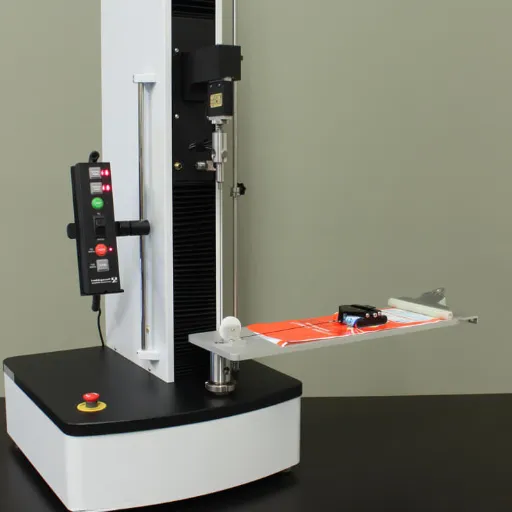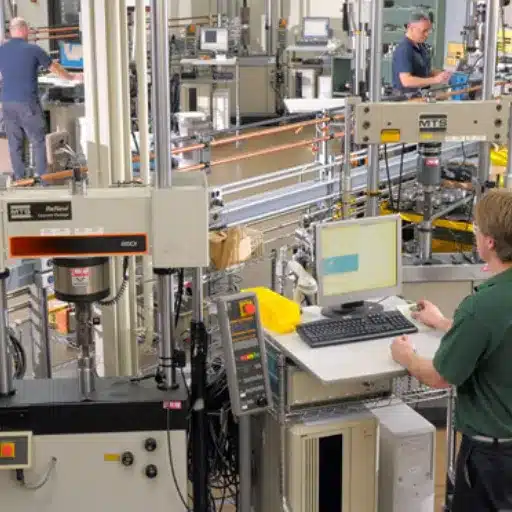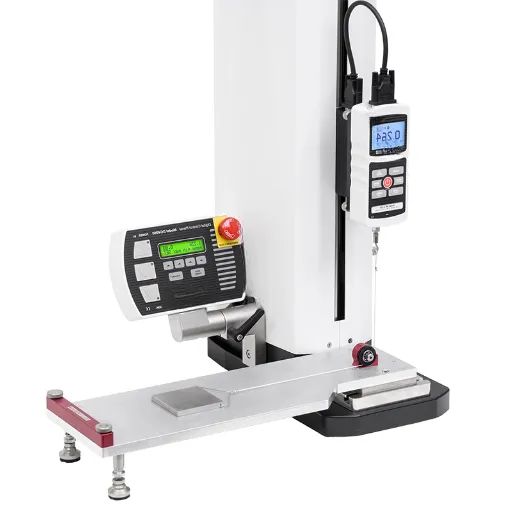Fatigue testing helps in the understanding of durability and reliability of a material when subjected to repetitive or cyclic loads for a long time. When the materials are pushed to their limits, the points of prediction and counteraction against fatigue failure should be looked into at well for ensuring best of performance and safety considerations, especially in the aerospace, automobile, and civil engineering industries. The present article shall focus on the state-of-the-art fatigue testing techniques, their applications in the evaluation of chronic fatigue of materials, and how these test results help in the creation of materials that will survive under extreme conditions. At the end of this article, readers will get a clear picture of the science behind fatigue testing and how it has been used as a means for innovating and creating high-performance materials across various critical sectors.
Understanding Fatigue Tests
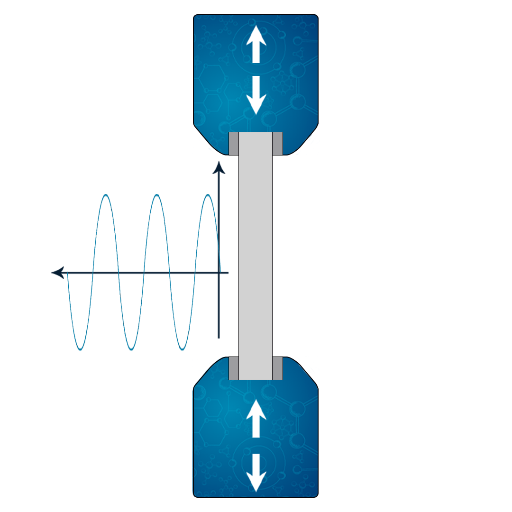
As the name suggests, fatigue tests deal with how materials perform when a cyclic stress is repeatedly induced on them with passing time. These tests are carried out under simulated conditions that produce random or variable loads on a given specimen until it breaks, so the durability of the specimen can be determined and life predicted. The main point of interest is the fatigue strength of the material: the maximum stress that the material can withhold for a specified number of applications without breaking. Recognizing the critical levels of stress and failure helps engineers in designing products and structures in aerospace, automotive, and construction that are safer and reliable.
Definition and Purpose of Fatigue Tests
Fatigue tests are very important for determining the endurance limits of materials under cyclic loading conditions. Presently, it is known that with the passage of time fatigue causes damage and failure of the material if about to 10^6 repetitions of cyclic frontal stress-action are produced, usually below the ultimate tensile strength of the fracture. Hence, more recent approaches show that both contemporary simulation techniques and machine learning algorithms are increasingly being used within the fatigue testing procedures to better model responses to stress and predict failures with greater accuracy-so of utmost importance in aerospace and automotive domains, wherein the reliability of the materials can maximally affect safety and efficiency. Recent search trends also emphasize the incorporation of real-world environmental factors, like varying temperature and corrosion, to make fatigue tests even more reflective of the operational scenarios. Therefore, it is apparent how fatigue testing continues to evolve to ensure that materials and designs are held to the highest safety and performance standards.
Importance of Fatigue Testing in Material Evaluation
It is of extreme significance to fatigue test in the determination of the durability and lifespan of materials under cyclic stress conditions. It provides essential information in predicting the behavior of materials subjected to repetitive loadings in due course; this is very important in respect to ensuring the integrity of the structures and also prevents causes of unwanted failures. In areas such as aerospace, automotive, and construction, fatigue testing is highly regarded to establish the lifetimes of components so as to avoid accidents and improve designs. The process mimics the working conditions, taking into consideration such variables as magnitude and frequency of stress and environmental factors, making it an indispensable step toward making safer and more reliable materials and systems.
Overview of Fatigue Behavior in Materials
Material fatigue behavior is said to concern the progressive and localized mechanism of structural damage occurring when subjected to cyclic loading over a time frame. The said phenomenon leads to crack initiation and crack propagation, which might lead to sudden failure although the applied stress still remains below the ultimate tensile strength of the material. Stress amplitude, mean stress, loading frequency, the material involved, type of environment, temperature, and corrosive effects are among the basic factors influencing fatigue behavior. Therefore, the knowledge of these factors becomes valuable when attempting to predict the fatigue life and to design components able to withstand repeated loading in areas ranging from mechanical applications to infrastructure design.
Methods of Fatigue Testing
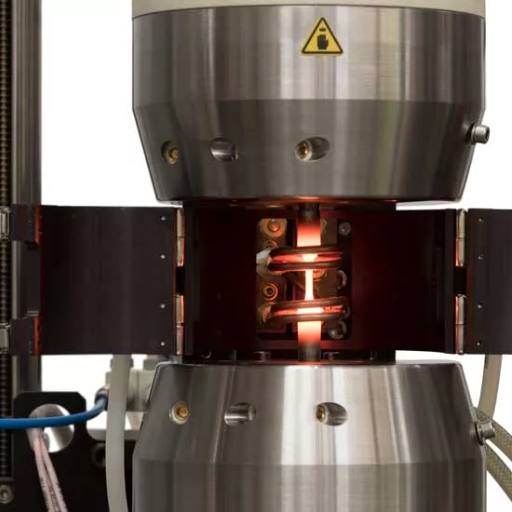
Fatigue testing methods include constant amplitude testing, variable amplitude testing, rotating bending, axial loading, and thermal mechanical fatigue testing.
|
Method |
Description |
Key Points |
|---|---|---|
|
Constant Amplitude |
Tests at fixed stress level |
Fixed stress cycle |
|
Variable Amplitude |
Tests with varying stress |
Stress variation |
|
Rotating Bending |
Applies cyclic bending load |
Rotary cyclic load |
|
Axial Loading |
Test under axial stresses |
Axial stress test |
|
Thermal Mechanical |
Combines thermal and stress |
Heat & stress cycle |
High-Cycle Fatigue Tests
Under HCF testing, the operational material under high cyclic loads, ranging from 10⁴ to even 10⁷ cycles, is subjected to relatively low stress. The test therefore gauges the long-term durability and performance of materials under such conditions where stress amplitude might kill the material in no less than a few seconds, while fatigue creeps in few days or years. The ultimate aim is to determine the fatigue limit (or endurance limit), which represents the stress level that will allow a material to withstand an infinite number of cycles without failure.
HCF tests under different loading conditions may consider axial, bending, or torsional stresses. Well-designed loading profiles consist of fully reversed loading patterns (R = -1) in which the material specimen is subjected to equal magnitudes of tensile and compressive stresses so that the full fatigue range of the material can be realized. The results from these tests are often used to draw S-N curves: plots of stress versus the number of cycles, thereby describing in detail the fatigue-associated life and endurance features of the material under consideration.
Low-Cycle Fatigue Tests
Low-cycle fatigue (LCF) testing is a relatively smaller-number-of-cycle method employed to characterize material behavior under conditions of major strain. While the significance of plastic deformation is direct, a low number of load cycles are tolerated. These tests become significant for exceptions wherein constituents experience cyclic loading above the elastic limit, for example, engine parts or aerospace structures. LCF testing protocols are predominantly based on strain-controlled loading (Δε is specified), where the resultant stress response is observed.
The results are usually reported as ε-N curves (strain amplitude versus number of cycles to failure), which provide valuable information about the fatigue life of materials under plastic deformation. One of the dominant parameters for evaluation in LCF tests is the Coffin-Manson relation, which defines plastic strain range by correlating it logarithmically to fatigue life. Knowledge of the Coffin-Manson relationship allows engineers to predict the life cycle of materials or components working in tough environments, thus enabling a design of components that satisfy safety and performance requirements.
Comparative Analysis of Test Methods
The primary test methods for material fatigue analysis include Low Cycle Fatigue (LCF), High Cycle Fatigue (HCF), Thermo-Mechanical Fatigue (TMF), and Rotating Bending Fatigue (RBF).
|
Test Method |
Key Focus |
Load Type |
Cycle Range |
Environment |
Purpose |
|---|---|---|---|---|---|
|
LCF |
Plastic strain |
High load |
<10,000 |
Controlled |
Lifespan calc. |
|
HCF |
Elastic strain |
Low load |
>10,000 |
Standard |
Crack analysis |
|
TMF |
Thermal stress |
Combined |
Variable |
Elevated temps |
Thermal impact |
|
RBF |
Rotating stress |
Alternating |
High cycles |
Variable |
Fatigue test |
Factors Affecting Fatigue Life
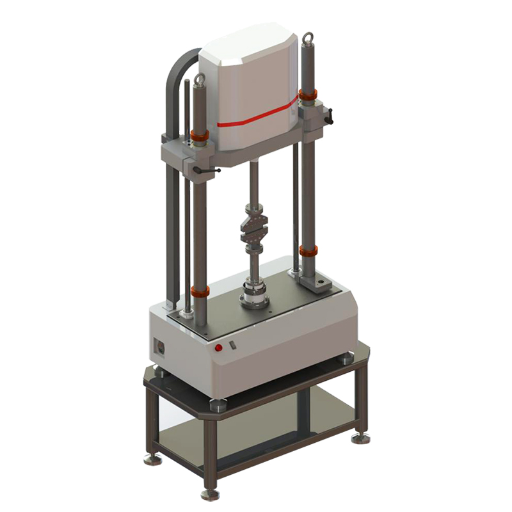
Fatigue life is dependent upon several critical factors affecting the fatigue characteristics and may be due to materials, working conditions, and environmental parameters. These are listed below as major contributors:
1.Material Properties: These include microstructure, surface finish, and internal defects. Those materials that have generally higher tensile strength or finer microstructure tend to have good resistance to fatigue.
2.Load Characteristics: Load magnitude, frequency, and cyclic variations characterize the type of stress imposed-could be axial, torsional, or bending stresses-applicable to reduce fatigue life. Stress amplitudes with variable loading diminish desirable life.
3.Environmental Conditions: Exposure to corrosive elements, temperature, and humidity, among others, accelerates the damage mechanism such as oxidation or stress corrosion cracking, thereby diminishing fatigue limits.
4.Geometrical Features: Areas of an elevated stress concentration like notches, welds, or sharp corners will produce the initiation of cracks and greatly reduce the fatigue life.
5.Residual Stresses: Residual compressive stresses, in many cases introduced by shot peening, uplift fatigue life, while residual tensile stresses may lower it.
While taking all these factors into consideration, the designer and analyst accurately predict and optimize fatigue performance.
Material Composition and Alloy Properties
Increased attention is paid to the material composition and alloy properties because they determine mechanical properties, such as fatigue life, strength, and durability. Typically, the more pure the alloy and the fewer inclusions it has, the better the fatigue resistance. Alloying additions may be incorporated to impart specific characteristics to the system, e.g., chromium for corrosion resistance and nickel for toughness, depending on the requirements at hand. Microstructural characteristics such as grain size, phase distribution, and precipitates will also affect the performance-either finer grains or a uniform microstructure experience better mechanical resistance during cyclic loading. Selection of the proper material and alloy system is an important step in ensuring performance and life for any application under repetitive stresses.
Deformation and Plastic Deformation Effects
Deformation is therefore understood as change in the shape or size of a material subjected to external forces. It may be elastic deformation when the stressed body returns to its original dimension after the stress is removed or plastic deformation whereby the body is permanently deformed, i.e. irreversible change in its structure. Once stress exceeds the yield strength of the material, plastic deformation commences, forever changing the material’s microstructure.
Main factors affecting deformation are the material considered, temperature, applied stress, and strain rate. On a microstructural scale mechanism such as dislocation movement, twinning, and slip govern plastic deformation. Dislocation density increases with deformation, thus creating obstacles to dislocation displacement and inducing work hardening. On the other hand, high-temperature environmental conditions can promote creep deformation where materials at elevated temperatures slowly deform under the application of constant stress in the long term.
Effects of plastic deformation are considerable material strengthening and hardening through strain hardening, whereas a decrease in ductility; obviously, this precipitates the material to fracture. These should be taken into consideration, both for applications and for the engineering design of structures. Therefore, knowledge of these effects will assist in the selection and design of materials in loading environments that either exhibit some or none of these characteristics.
Fracture Mechanics in Fatigue Testing
Fracture mechanics in fatigue testing concern the behavior of materials and crack growth under cyclic loading to predict failure. Main approaches include the identification of the threshold stress intensity factor (ΔK_th), i.e., the lowest cyclic load able to promote crack growth, and the consideration of crack growth rates, usually by using Paris law. Fatigue testing involves crack initiation, propagation, and final fracture. Such approaches are combined with advanced tools, including x-ray or ultrasonic inspection, to predict the life of materials and structures to achieve a level of reliability in design and preclude catastrophic failures.
Applications of Fatigue Testing
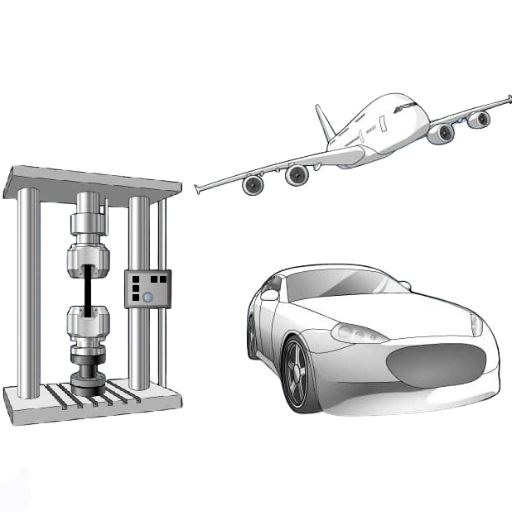
Fatigue testing is of utmost concern in various industries that ascertain the safety, durability, and performance of the components and structures from cyclic loading. In aerospace industries, objects like aircraft wings or low-weight structures are fatigue-tested so that failure does not result in catastrophic consequences. The automotive industries test the fatigue for engine parts, suspension, and chassis to design them to take care of repetitive stress. It occurs in civil engineering upon bridges, pipelines, and other kinds of infrastructure to predict their performance versus dynamic loads over time. The creation of medical devices is also a very interrupted field of fatigue testing, especially for implants and prosthetic devices that should be able to undergo repeated physiological stresses. Fatigue testing thus simulates operating conditions and provides a basis for improving their design w.r.t. materials and the avoidance of structural failures.
Fatigue Testing in the Automotive Industry
Fatigue testing in automotive is done to ensure the durability and reliability of the vehicle component. It allows manufacturers to investigate materials and assemblies subject to cyclic stresses during normal driving conditions. Fatigue testing would expose a component or design to engine vibrations, suspension movements, irregular road surfaces, etc., and then observe how they may begin to fail. These test data assist the engineers to optimize the design, materials’ performance, and safety of the vehicle. Also, validity through fatigue testing is essential in certifying industry standards and regulations, which, in turn, imposes consumer confidence.
Aerospace Applications and Material Reliability
In aerospace engineering, material reliability is an ultimate factor since aircraft and spacecraft are subjected to extreme conditions. Fatigue testing helps in assessing the behavior of materials on long-term cyclic stresses such as varying pressures, changes in temperature, and mechanical loadings. The objective is to test advanced composites, alloys, and metal structures for resistance against all factors that can cause cracking, buckling, and failure throughout their entire operational lifespan. This leads to the development of safer and more durable materials, help with conformance to stringent aerospace industry standards, and thus decrease risk and significantly enhance the reliability of commercial as well as military aircraft systems.
Construction and Manufacturing Insights
Construction and manufacturing processes in aerospace emphasize high precision, innovation, and rigorous standards compliance. From my reading of major sources, advanced technologies such as automated assembly lines and additive manufacturing (3D printing) are very much in use to create complex components with higher efficiency and lesser wastage of materials. Additionally, materials testing and quality control are held at every single stage to guarantee that the specifications will comply with advanced parameters of performance and safety regulations. All these panels work together to help develop lightweight, durable, and high-performance structures for modern aerospace applications.
Recent Advancements in Fatigue Testing Technology

Accuracy, efficiency, and level of simulation constitute the main factors on which recent technological changes in fatigue testing have been focused. Enhanced computational modelling tools permit more accurate reflection on how materials are expected to last under cyclic loading, thereby cutting down on the time an intense physical test might have required. Testing materials at high rates of loading using ultrasonic fatigue testing rates delivers the most essential data at a fraction of the time. With the advent of better strains in sensing technology- including more refined strain gauges and non-destructive testing methods- one could now acquire data in live time to facilitate deeper studying into crack initiation and propagation. Such innovations aid industries including aerospace and automotive to maximize material performance and assure structural integrity with conditions.
Integration of AI in Fatigue Tests
The incorporation of artificial intelligence (AI) in fatigue testing is a revolutionary change in the paradigm of how material and structural performance data is analyzed. AI algorithms, particularly those that run using machine learning, will look at big datasets from fatigue testing to infer failure patterns and also optimize test procedures. AI analyzes historical data and identifies trends to improve fatigue life prediction accuracy, thus lessening the need for expensive, unreliable physical testing.
In addition, advanced AI models can discover minute correlations between material properties and fatigue behavior that were previously impossible to pinpoint, hence enabling more accurate assessments of material performance. Nowadays, neural networks and decision trees can classify as well as predict failure points under different types of loading, which, in turn, supports applications where safety and reliability are paramount, including aerospace and automotive engineering.
They also enable more efficient automated test setups by making real-time decisions about correcting errors or locating anomalies in test simulations, thus limiting human error while providing deep insights at very fine scales about interesting stress-strain relationships and crack propagation mechanisms. Together with AI assistance, fatigue testing promises to be faster, cheaper, and much more dependable, laying the foundation toward the future of materials engineering and durability assessment.
Automation in Mechanical Testing
Automation in mechanical testing improves the accuracy and repeatability of experiments at the stage where advanced robotics, machine learning, and ICT-enabled devices are interfaced together. Currently, it is trending for robotic devices to handle the loading and unloading of samples while ensuring samples are positioned correctly under the tested conditions. IoT technology has been introduced to monitor and transmit data in real-time, allowing operators to interrogate test parameters off-site, enhancing robot uptime. Moreover, machine learning algorithms predict materials performance by identifying patterns in historical data, thereby reducing the time it takes to pinpoint potential failure points. These innovations are not only likely to increase reliability but are also bound to reduce operating costs, thereby stimulating innovations across industries that depend on rigorous material validation.
Future Trends in Fatigue Testing Methodologies
Based on my investigations, heavy focus is to the automation, digitalization, and advanced predictive analytics in fatigue testing methodologies. The integration of AI and machine learning will, therefore, gain importance upon enabling fast and more accurate methods of identifying fatigue behavior through analyzing a vast collection of datasets. Similarly, digital twin technologies are expected to imitate conditions from the real world where accurate materials’ responses are predicted. On the other hand, the biggest advances in sensor technology and non-destructive testing methods will boost the real-time acquisition of data without affecting the tested materials. These solutions therefore will lead to an ever-evolving fatigue testing along with the increase in complexity of modern engineering demands.
Reference Sources
- Fatigue testing – Wikipedia: Provides an overview of fatigue testing methods and applications.
- Fatigue Testing: Methods, Materials & Applications – Biopdi: Discusses how materials behave under repeated stress and cyclic loading.
- Fatigue Testing | Shock Testing | Alemnis Instruments: Explains common fatigue testing methods like axial loading and bending.
- Effect of Physical Parameters on Fatigue Life of Materials – MDPI: Explores the impact of physical parameters on material fatigue life.
- Types of Performance Testing – Abstracta: Covers various performance testing types, including endurance and stress testing.
Frequently Asked Questions (FAQs)
Q:What is a fatigue test?
A:A fatigue test is a method by which the durability and life performances of materials and components are assessed due to cyclic loadings. The test presents the analysis of two variables: time and elimination. It views the condition of a material subjected to loading with stress over time. This test helps to predict the service life in application and its failure point.
Q:Why are fatigue tests so important?
A:Fatigue test is vital for the product’s reliability, safety, and durability, especially in the aerospace, automobile, and construction industries. By recognizing possible failure modes, manufacturers can change the designs or materials to produce safer and more durable products.
Q:What materials are usually subjected to fatigue testing?
A:Materials usually fatigued in testing include metals like steels and aluminum, polymers, and composites. Different situations exhibit different fatigue behavior and must be examined for them to confirm whether they meet performance requirements in their respective applications.
Q:What are the procedures concerning fatigue testing?
A:A fatigue test is usually conducted using special equipment applying cyclic loading on a specimen until it fails. It is possible for the test to be conducted in various environments, including room temperature or some elevated temperature, and may incorporate various loading states such as tension, compression, or torsion.
Q:What are some common standards for fatigue testing?
A:Common standards for fatigue testing include ASTM E468, ISO 1099, and ASTM D7791, to name a few. These standards shall give meaningful instructions about the test procedures, the preparation of specimens, and the treatment of data so that different laboratories may come to consistent and reproducible results.
Q:What is the interpretation of fatigue test?
A:The results of fatigue tests are usually interpreted by S-N curves-the graph of stresses against numbers of cycles and can include other parameters of fatigue, such as the fatigue limit, endurance limit, or total number of cycles to failure. Interpretation of these results allows engineers to choose the material and optimize the design.
Q:What are the factors that affect fatigue life?
A:There are many factors affecting the life of a material under fatigue, and they include the type of material, the surface finish, the load conditions, the temperature, and the temperature of the environment, including corrosion and wear. Knowing these factors is extremely important in order to provide a good estimate of the fatigue life of a product.
Q:Can fatigue testing be carried out on components instead of materials?
A:Yes, fatigue testing can also be applied to complete components or assemblies and not just raw materials. This kind of testing checks the interactions between the different parts and ensures the entire system can withstand a cyclic load in operational conditions.


